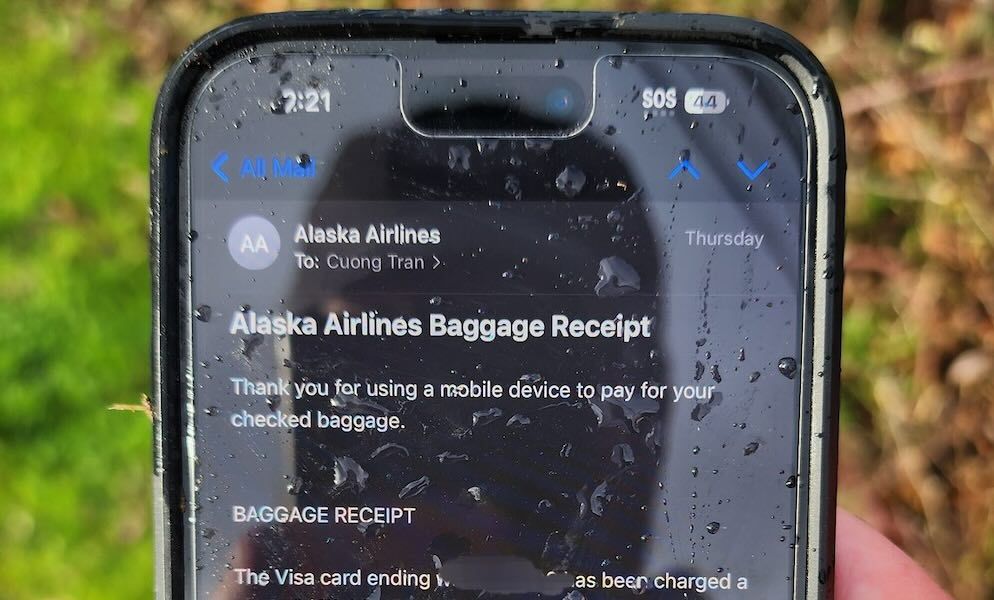How Can an iPhone Survive a Fall from a Plane But Break When Dropped from Your Hand
 Credit: Seanathan Bates / X
Credit: Seanathan Bates / X
Toggle Dark Mode
You may recall that back in January an iPhone was found intact and in working condition after blowing out the door of an Alaska Airlines flight during a sudden decompression event and falling 16,000 feet to the ground. The iPhone was found intact and in working condition after the plunge. How did that happen, other than dumb luck?
First of all, to jog your memory, the device was sucked out of Alaska Airlines flight 1282 when an unused cabin door broke away a few minutes after take-off.
The iPhone wasn’t the only thing that got sucked out of the plane. The force of the sudden depressurization also pulled other electronic devices and headsets from the heads of the cabin crew out of the open hole in the hull of the aircraft.
The iPhone 14 Pro Max, which had a case on it, plummeted 16,000 feet from the Alaska Airlines flight before landing on a patch of grass.
The iPhone was later found on the side of the road. Since it wasn’t locked with a passcode or password, Sean Bates, who found the device, was able to open it, discovering an Alaska Airlines baggage claim receipt and turning it in to the National Transportation Safety Board (NTSB).
The Wall Street Journal’s Joanna Stern (Apple News+) decided to investigate how this could happen.
Stern performed a series of drop tests with two smartphones, an iPhone 14 and a Samsung Galaxy S23. While Stern’s results varied between different tests, the most important test involved dropping both phones from 300 feet above the ground, sans cases, onto a grassy area.
The result of Joanna’s 300-foot drop tests? Both phones survived with “no real damage” other than gathering a bit of dirt and grass.
Stern asked multiple experts how the devices could have survived, resulting in an interesting science lesson for those of us who are unaware of something called “terminal velocity.”
Stern posed the question of why an iPhone can survive a 16,000-foot plunge from a plane but suffers a broken display when your cat knocks it off a kitchen counter, seeking out answers from a NASA mechanical engineer and a physics professor.
“It doesn’t matter if you drop the phone from 300 feet up or from space,” said Mark Rober, a former NASA mechanical engineer turned YouTuber. “It’s going to be the same result because of something called terminal velocity.”
I called Rhett Allain, an associate professor of physics at Southeastern Louisiana University. He explained that, because of the mass, size and shape of a smartphone, it will increase in speed until it hits about 60 miles an hour. At that point, air resistance keeps it from getting any faster. Joanna Stern, The Wall Street Journal
According to physics professor Rhett Allain, 300 feet in the air was enough height for a smartphone, with or without a case, to reach a terminal velocity — the point at which it doesn’t fall any faster or harder.
Both Rober and Allain said that a grassy area, like the one where the iPhone landed, cushions the falling object, allowing for slower deceleration. However, if it had been unlucky enough to land on a sidewalk, asphalt road, or paved parking lot, the deceleration would have been much more abrupt, severely lessening the device’s chances of survival.







